A disease that is transmitted to people through
food.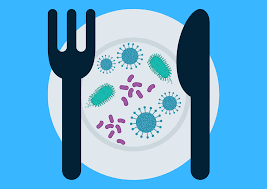
Food borne Illness
The whole hand washing process should take at least

20 seconds
Hand antiseptics are also known as hand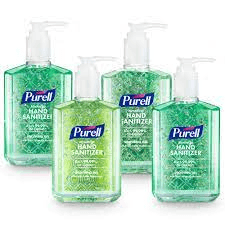
sanitizer
What is cross contamination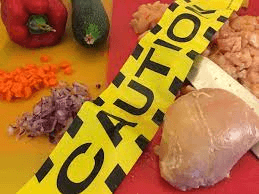
Pathogens transferred from one surface or food to another
Time and temperature controls means what? 
Limiting how long food spends at incorrect temperatures
Bacteria, Viruses, Parasites, Fungi. What type of hazard is this?

Biological Hazard
Use running water as hot as you can comfortably stand....

Wet hands and arms.
NEVER use a hand antiseptics of
instead of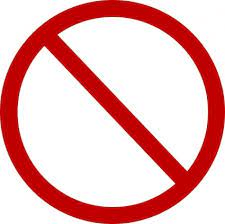
washing your hands.
Keep contaminated food and nonfood items ___ of the operation.
out
TCS stands for
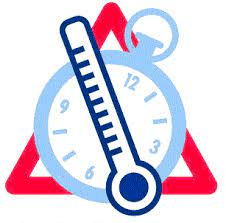
Time and temperature control for safety
Cleaners, sanitizers, polishes. What type of hazard is this?
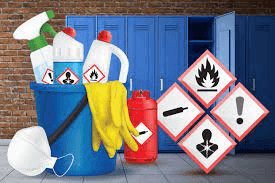
Chemical Hazard
Apply enough ____ to build up a good lather.
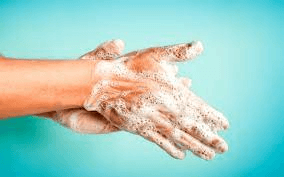
Soap
Wait for the antiseptic to ___ before
touching food or equipment and before
putting on ___.
dry
gloves
Packaging must be ___ and ___.
intact
clean
TCS food must be kept out
of this range.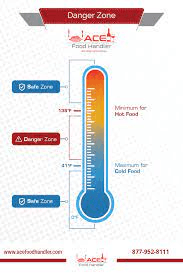
Temperature danger zone
Occur naturally like bones in fillets, fruit pits; objects like metal shavings, staples, dirt, glass, bandages, jewelry.

Physical Hazard
Scrub hands and arms vigorously. Scrub them for __ to __seconds. Clean under ___ and between
fingers.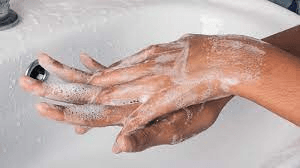
10-15 seconds,
nails
What are the components of a hand washing station?

Hot & cold running water • Soap • Single-use paper towels or a hand dryer • Garbage container
Reject items if the packaging is ____, water
stained, ____ or discolored.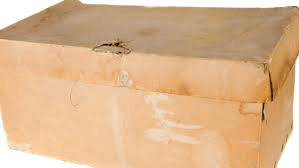
dirty
leaking
If you find food at __________ __________, tell your manager
incorrect temperatures
Transferring pathogens from one surface or food to another
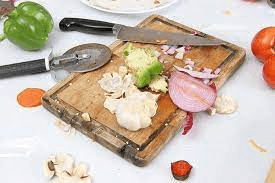
Cross Contamination
Using running warm water to
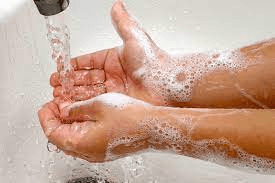
Rinse hands and arms thoroughly
Wash your hands ___ in a designated ___ sinks.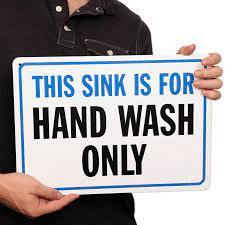
Only
hand washing
Make sure cans you receive are not ____, _____ or have swollen ends.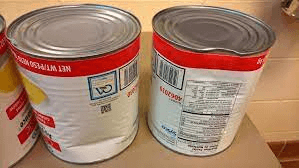
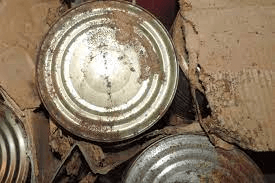
dented
rusty
If you find food at
incorrect temperatures you may need to take
corrective actions.
This can include cooking, ____, or ____ ____ the food.
reheating
throwing out
DON’T transfer pathogens from your body to food. We can do this by practicing

Good personal Hygiene
Dry hands and arms. Do NOT use your apron or any part of your uniform. Use a ________ or a ________.
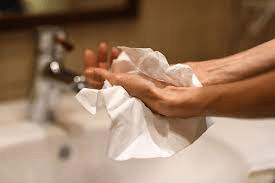
Single-use paper towel
hand dryer
Do NOT use hand washing sinks for other things.
NEVER dump ___ water in them.
NEVER prep ___ in them.
NEVER wash ____ in them.
dirty
food
dishes
Always ____ items if you see signs of
pests.
reject
If you are going to control time and
temperature, you will need a ________,
and you need to know the correct way to
use it.
thermometer
Don't let food stay too long at temperatures that are good for pathogen growth. We can do this by controlling

Time and Temperature of food
Use a _______ to turn off the ____
paper towel
faucet
What is ready to eat food?
Food that can be eaten without any further preparation, washing, or cooking.
Store food and nonfood items ____ from walls and at least 6 inches off the floor
away
Make sure the thermometer is ready to be
used.
It must be ______, ______, ______ and air-dried before using.
Washed
rinsed
sanitized
DON’T transfer pathogens from one surface to another. DON’T transfer pathogens from one food to another. This will prevent

Cross Contamination
Use a ______ to open the door______.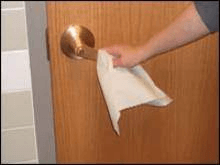
paper towel
restroom
Wearing ______ while handling ready-to-eat
food is one way to prevent
cross contamination
gloves
Wrap or ____ food before storing it.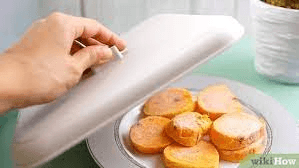
cover
What does calibration mean
adjusting a thermometer so it will read temperatures correctly
Keep everything clean. ____ and ___ anything that touches food.
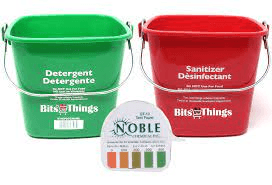
Clean and Sanitize
Contaminated hands equals....
Spread of pathogens
Only use ___ use gloves when handling food.
NEVER ___, wash or ____ gloves.
single
rinse
reuse
NEVER use old chemical containers to store ____.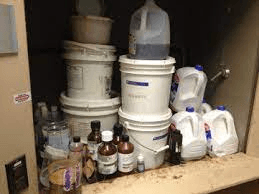
food
Check temperatures correctly. Stick the thermometer into the _______ part of the food. This is usually the center
Thickest
How do people make food unsafe?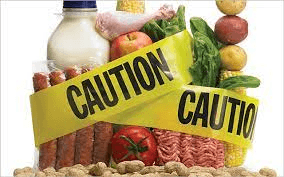
Purchasing food from unsafe sources
Poor personal hygiene
Time Temperature Abuse
Cross Contamination
Poor cleaning & sanitizing
When to wash your hands?

Starting work • Using the restroom • Handling raw meat, poultry, or seafood (before and after). • Taking out the garbage • Touching your hair, face, or body • Touching clothing or aprons. • Sneezing, coughing, or using a tissue. • Handling chemicals that can make food unsafe. • Clearing tables or busing dirty dishes. • Handling money. • Before putting on gloves at the start of a new task Handling service animals or aquatic animals • Smoking • Eating or drinking. • Chewing gum or tobacco. • Leaving and returning to the kitchen/prep area. • Touching anything else that may contaminate your hands.
When should we change our gloves?
As soon as they become dirty or torn
After handling raw meat, seafood, or poultry and before handling ready to eat foods
Before beginning a different task
Before preparing food for a guest with a known food allergy
After an interruption
Only store ___ in containers
intended for food.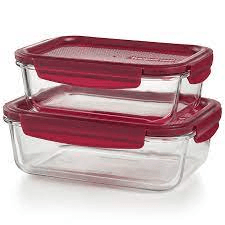
food
Clean and sanitize the thermometer. Wash, rinse, sanitize and air-dry the thermometer ___ using it. Keep its ____ ____ clean.
After
storage case